


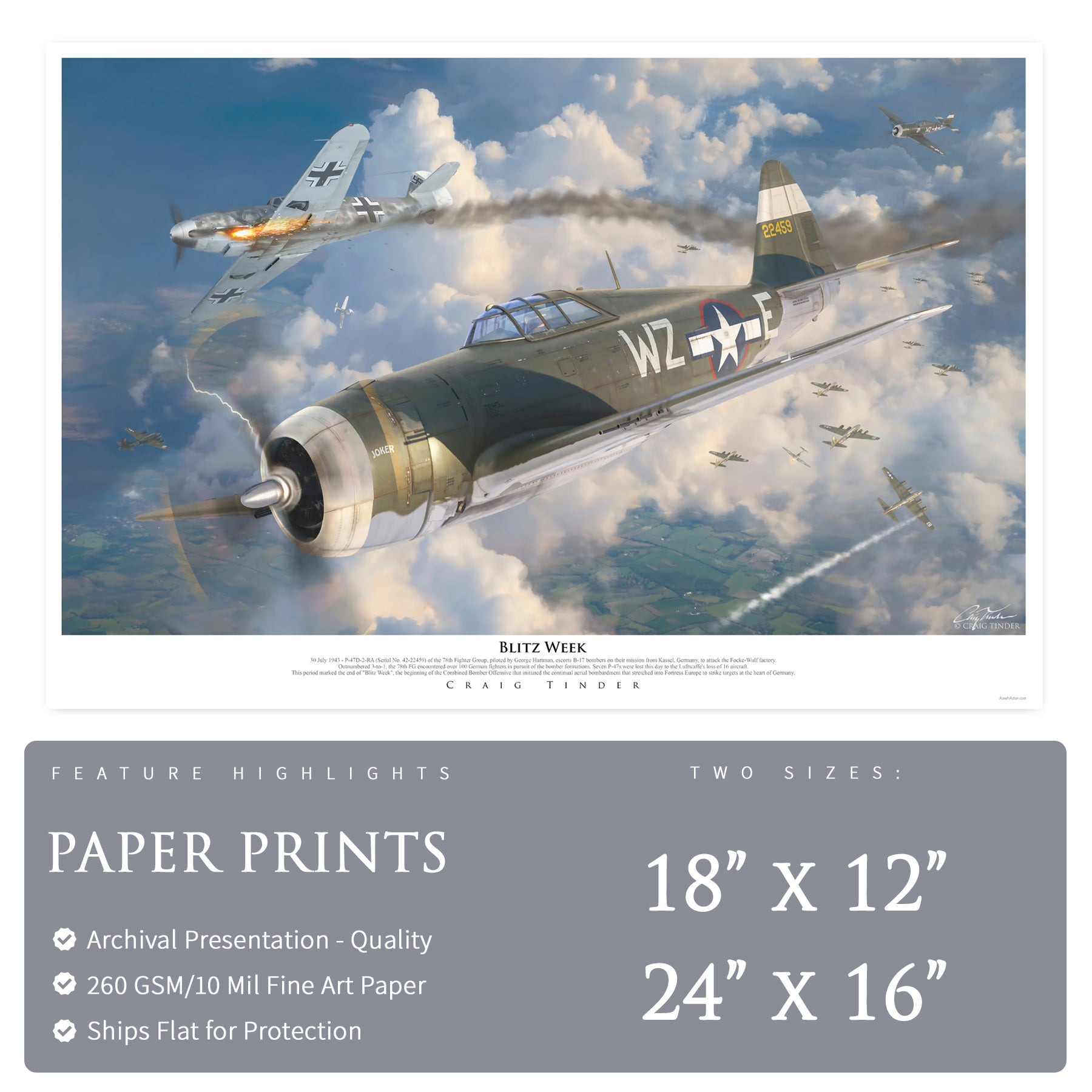
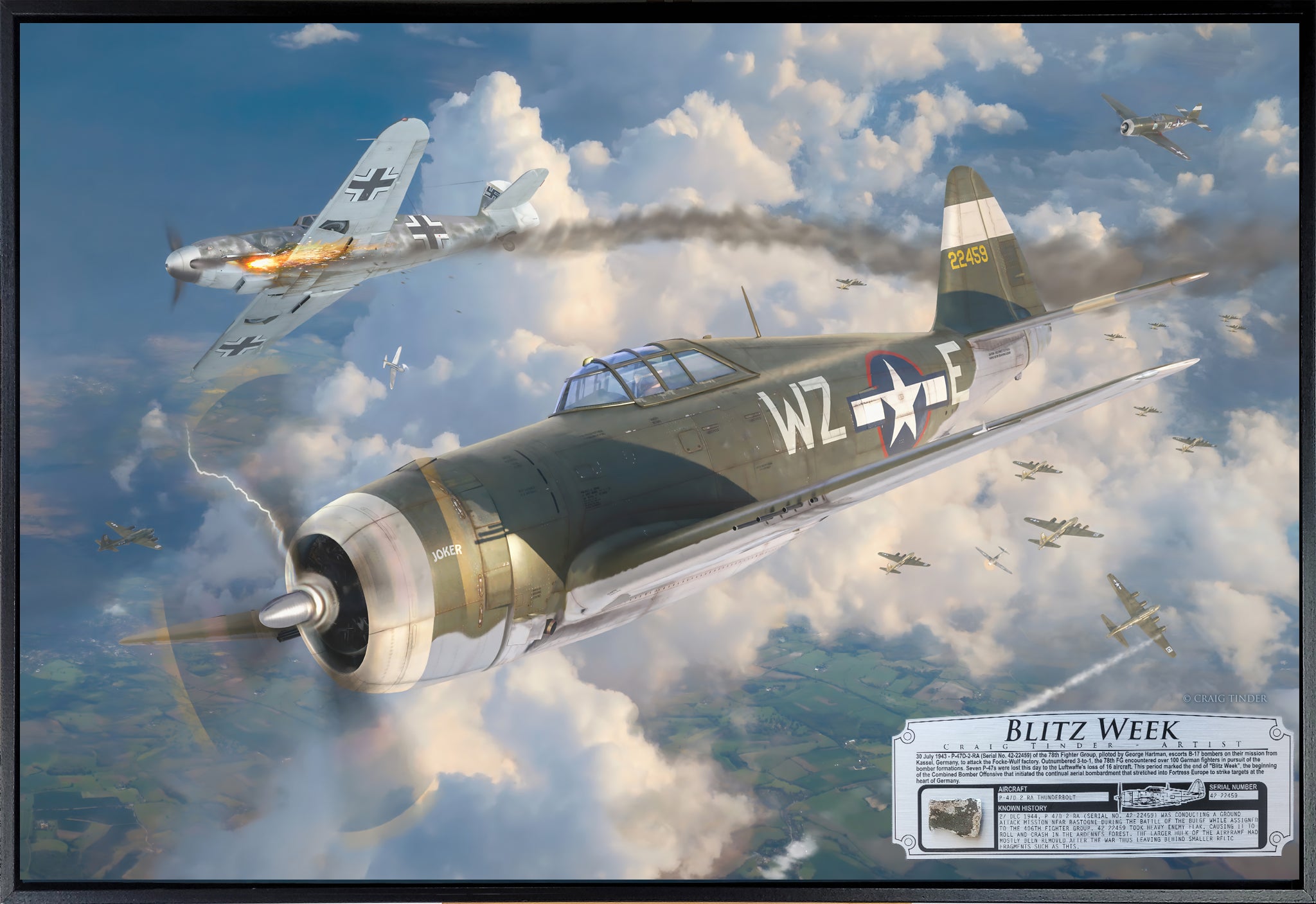
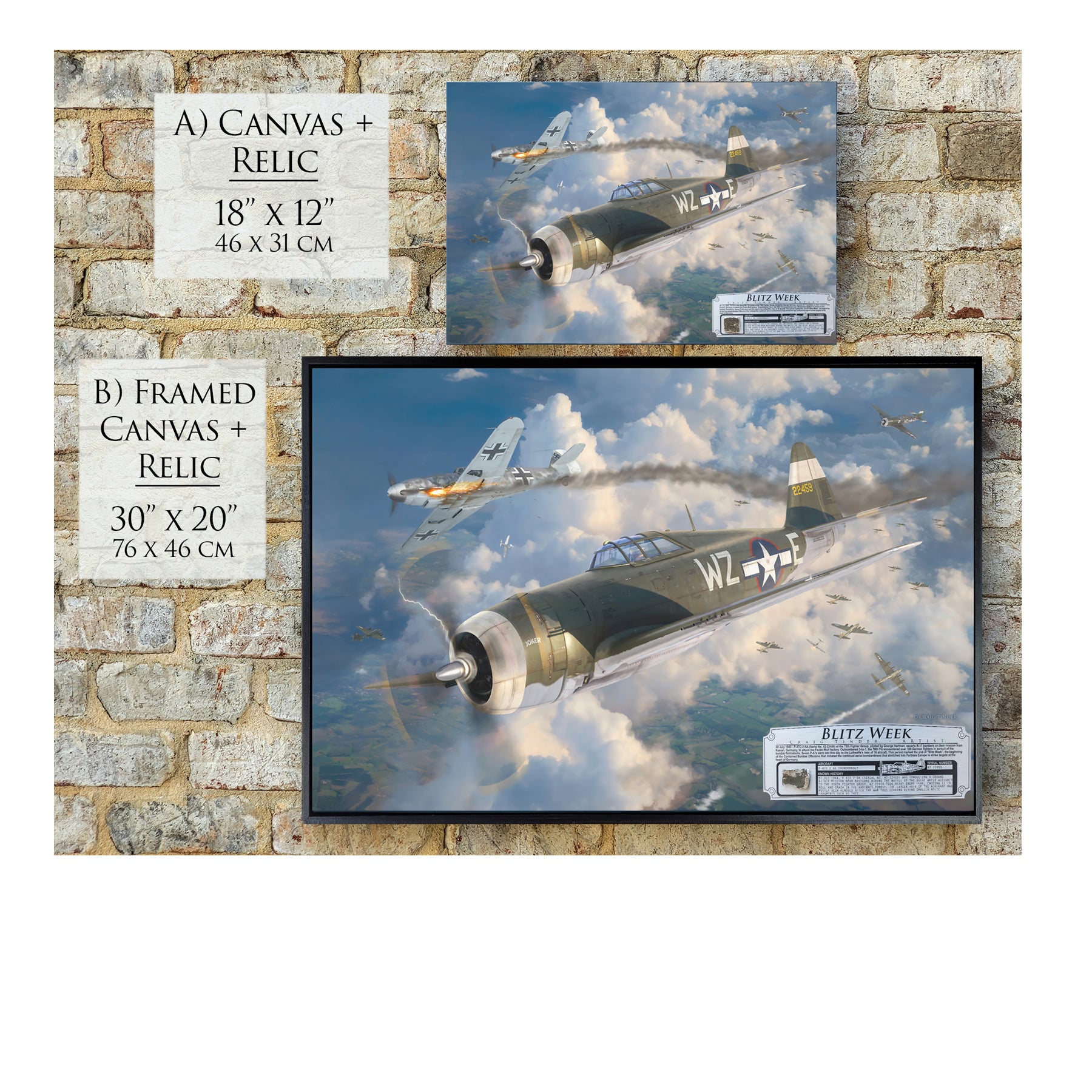
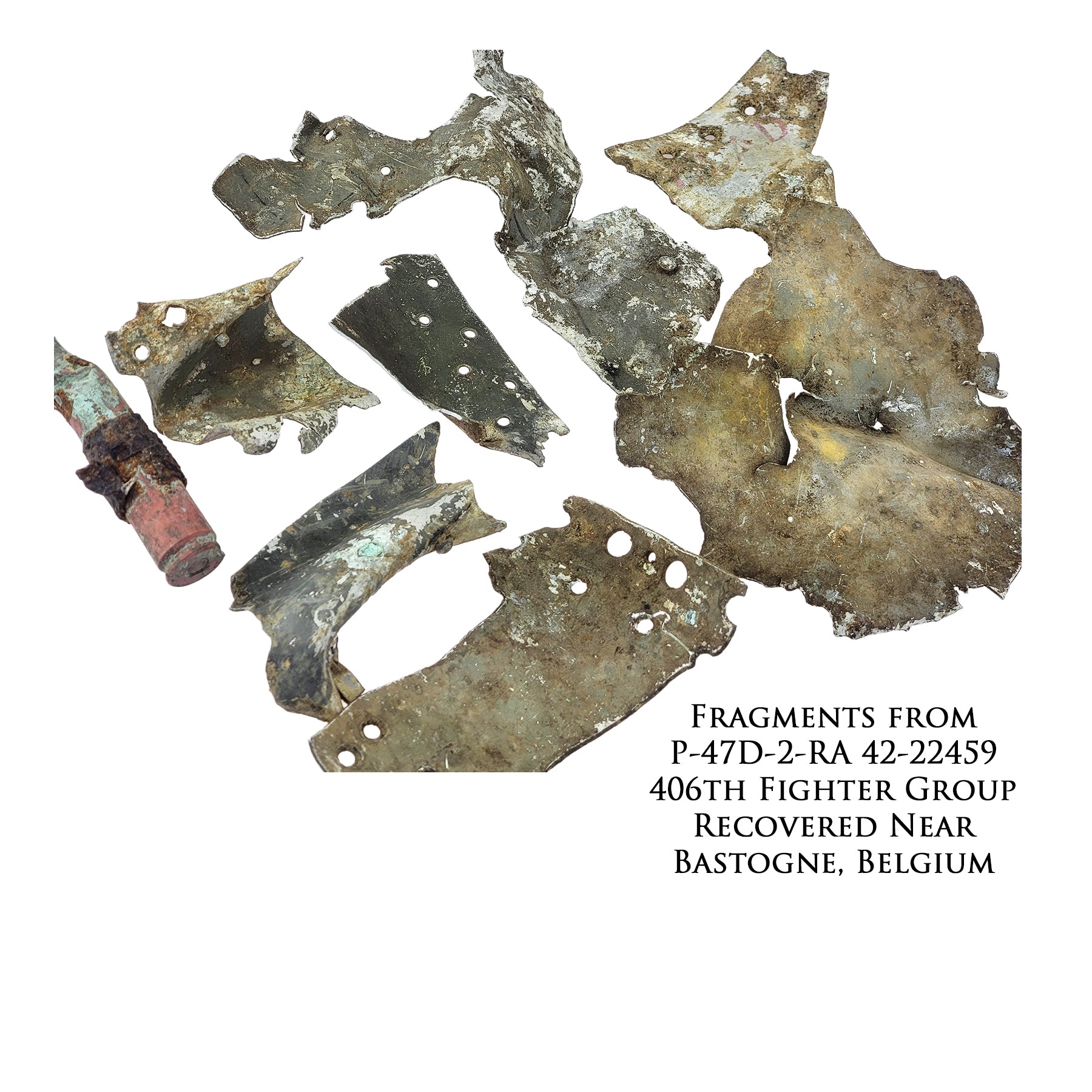
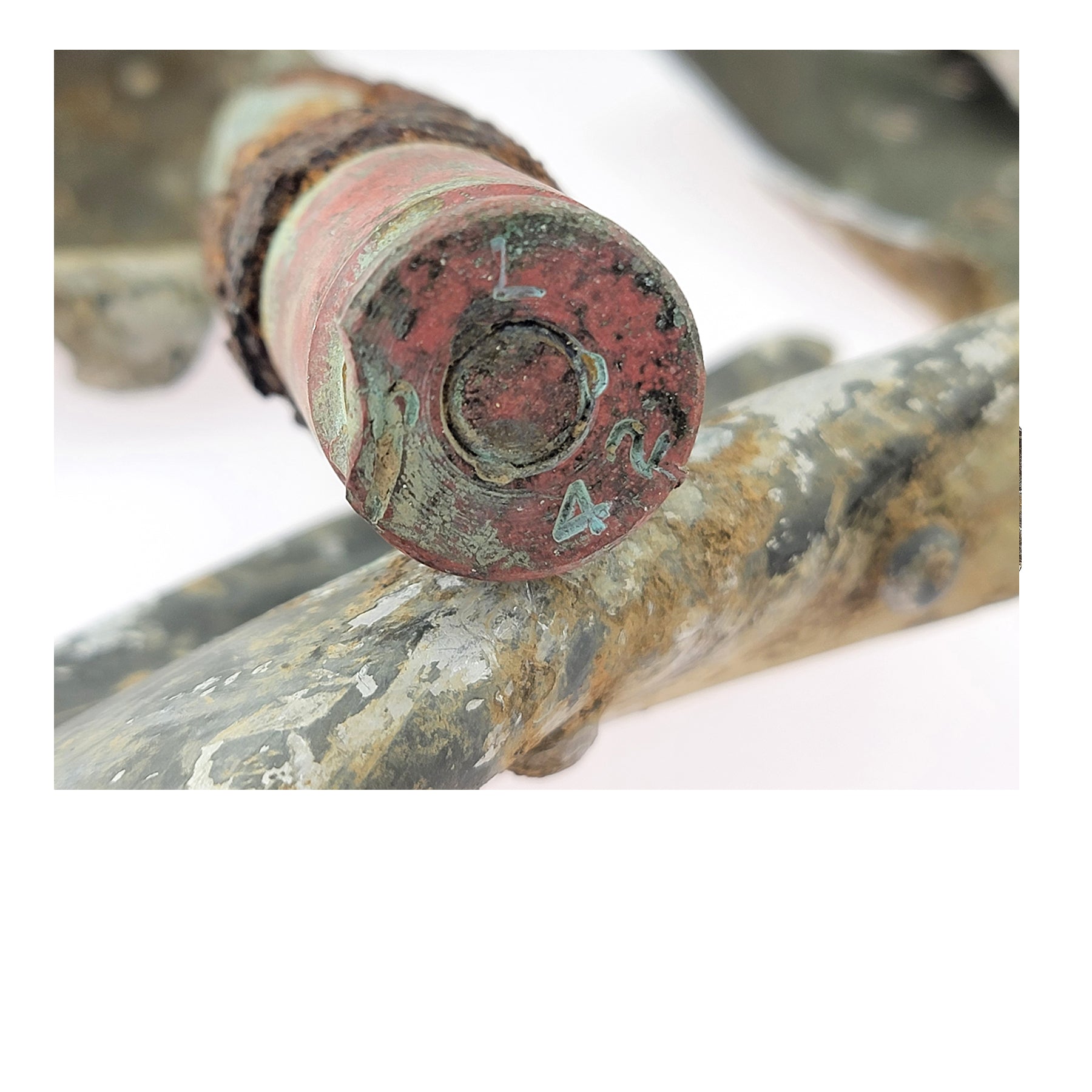
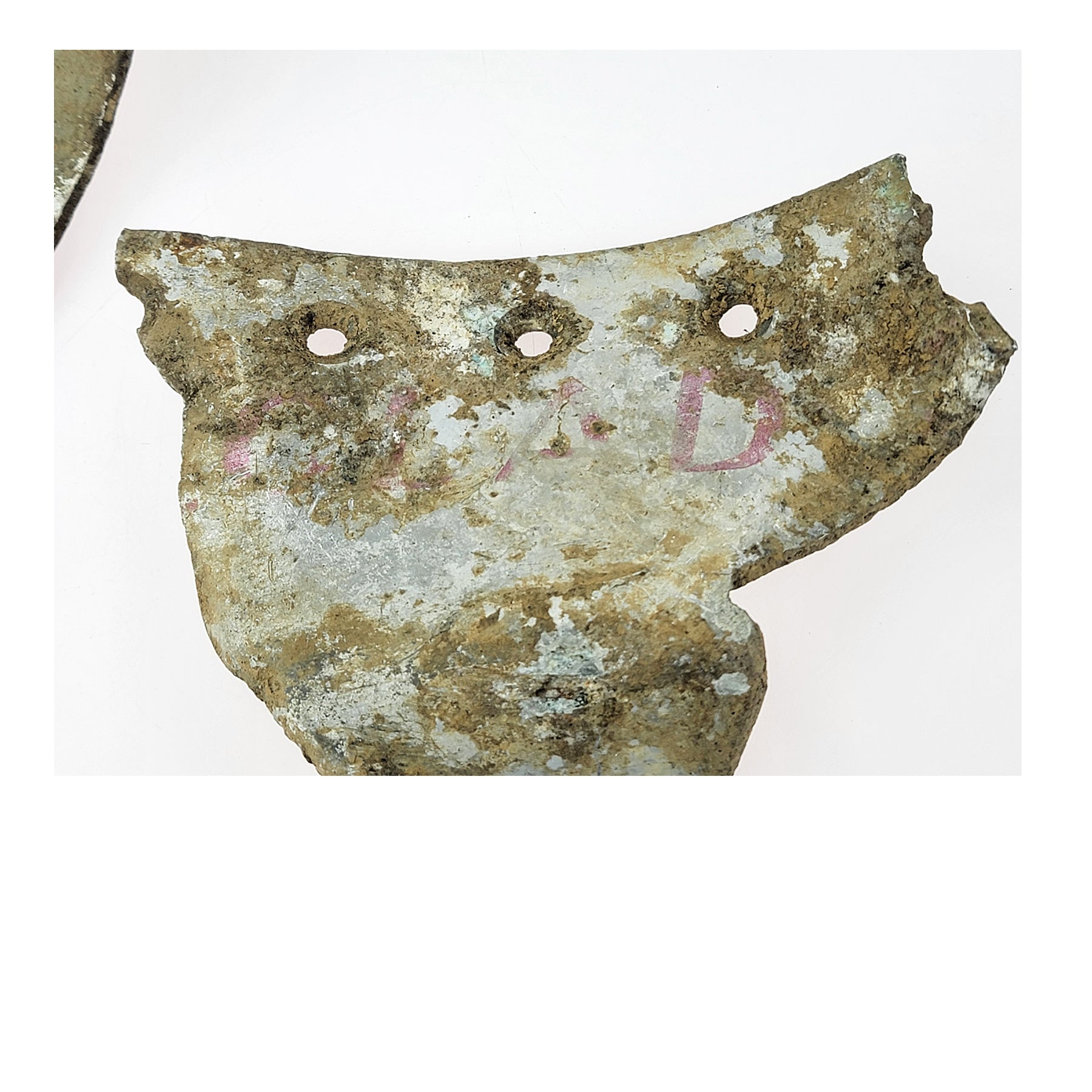


P-47 Thunderbolt - Blitz Week Canvas | INCLUDES: Airframe Relic

P-47 Thunderbolt - Blitz Week Canvas | INCLUDES: Airframe Relic
If you have any questions, you are always welcome to contact us. We'll get back to you as soon as possible, within 24 hours on weekdays.
Shipping Information
Use this text to answer questions in as much detail as possible for your customers.
Customer Support
Use this text to answer questions in as much detail as possible for your customers.
FAQ’s
Use this text to answer questions in as much detail as possible for your customers.
Contact Us
Use this text to answer questions in as much detail as possible for your customers.
Description
About the Relic & Process
On December 27, 1944, P-47D-2-RA (Serial No. 42-22459) was on a ground attack mission near Bastogne, Belgium, during the Battle of the Bulge, assigned to the 406th Fighter Group. The Thunderbolt was struck by heavy enemy flak, causing it to lose control, roll, and crash into the Ardennes Forest. Although the larger parts of the airframe were removed in the post-war years, smaller relic fragments remained at the crash site. These fragments were eventually recovered in the 1980s by Belgian aviation archaeologist W. Jacobs.
This event highlighted the crucial role of air support during one of the most pivotal battles of World War II, where the 406th Fighter Group provided vital air cover and close air support to ground forces fighting against the German offensive.
 P-47D-2-RA No. 42-22459 fragment
P-47D-2-RA No. 42-22459 fragment
 P-47D relic with manufacturer stamp
P-47D relic with manufacturer stamp
Disclaimer
By purchasing from Aces In Action, you acknowledge that the product may vary slightly from the images on our website. We use authentic materials from military vehicles and relics, which may contain potentially hazardous substances. These items are not intended for ingestion, inhalation, or use by children. Aces In Action is an independent company, unaffiliated with or endorsed by any other organization. All names, logos, and trademarks are the property of their respective owners and are used for identification only, in accordance with the Lanham Act. Their use does not imply any official endorsement.
